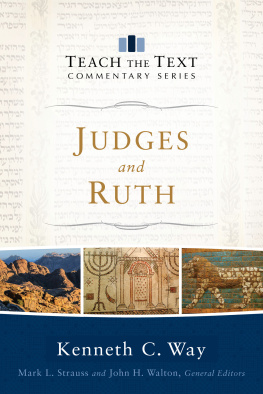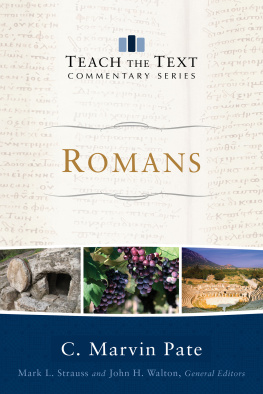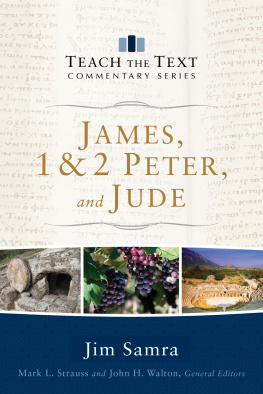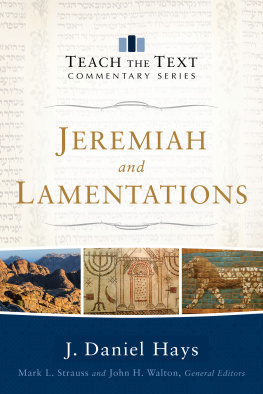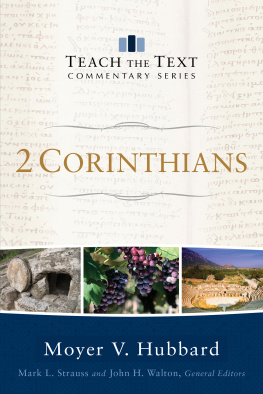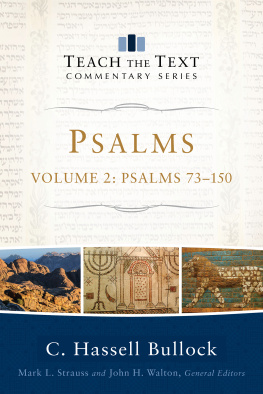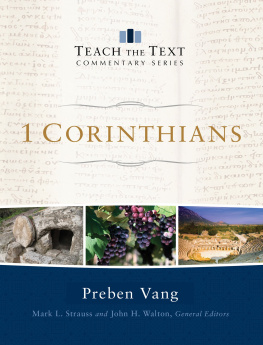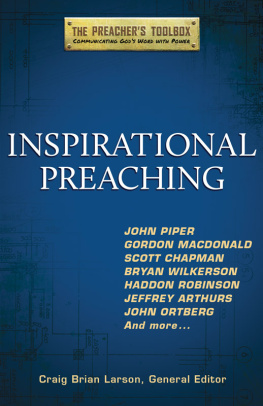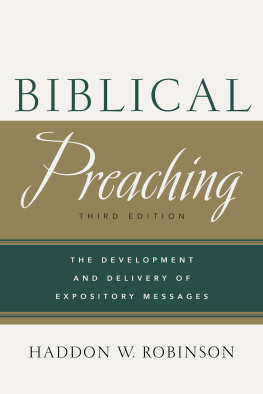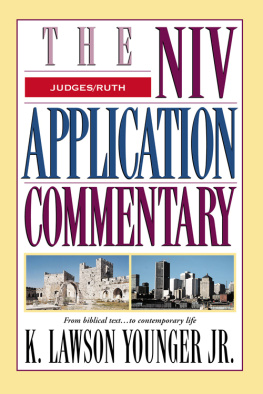Visit the series website at www.teachthetextseries.com .
Copyright Page
2016 by Kenneth C. Way
Illustrating the Text sections 2016 by Baker Publishing Group
Published by Baker Books
a division of Baker Publishing Group
P.O. Box 6287, Grand Rapids, MI 49516-6287
www.bakerbooks.com
Ebook edition created 2016
Ebook corrections 05.24.2018
All rights reserved. No part of this publication may be reproduced, stored in a retrieval system, or transmitted in any form or by any meansfor example, electronic, photocopy, recordingwithout the prior written permission of the publisher. The only exception is brief quotations in printed reviews.
Library of Congress Cataloging-in-Publication Data is on file at the Library of Congress, Washington, DC.
ISBN 978-1-4934-0535-0
Unless otherwise indicated, illustrations and maps are copyright Baker Publishing Group.
Unless otherwise indicated, Scripture quotations are from the Holy Bible, New International Version. NIV. Copyright 1973, 1978, 1984, 2011 by Biblica, Inc. Used by permission of Zondervan and Biblica. All rights reserved worldwide. www.zondervan.com; Biblica.com. Italics in the NIV text have been added by the author for emphasis.
The NIV and New International Version are trademarks registered in the United States Patent and Trademark Offices by Biblica, Inc.
Scripture quotations labeled ESV are from The Holy Bible, English Standard Version (ESV), copyright 2001 by Crossway, a publishing ministry of Good News Publishers. Used by permission. All rights reserved. ESV Text Edition: 2011
Scripture quotations labeled NASB are from the New American Standard Bible, copyright 1960, 1962, 1963, 1968, 1971, 1972, 1973, 1975, 1977, 1995 by The Lockman Foundation. Used by permission. (www.Lockman.org)
Scripture quotations labeled NJPS are from the New Jewish Publication Society Version 1985 by The Jewish Publication Society. All rights reserved.
Dedication
To my precious children: Schuyler, Bradford, and Lila.
May you and your generation do what is right in the eyes of the Lord .
Contents
Cover
Series Page
Title Page
Copyright Page
Dedication
Welcome to the Teach the Text Commentary Series
Introduction to the Teach the Text Commentary Series
Preface
Abbreviations
Introduction to Judges
Judges 1:12:5
Military Failure
Judges 2:63:6
Religious Failure
Additional Insights
Giants | Bronze Age Cities | Baal
Judges 3:711
Othniel
Judges 3:1230
Ehud
Judges 4:124
Prose Account of Deborah and Barak
Judges 5:131
Poetic Account of Deborah and Barak
Additional Insights
Women in the Book of Judges
Judges 6:132
Gideons Rise
Judges 6:337:25
Gideons Battle
Judges 8:132
Gideons Demise
Additional Insights
Angel of the Lord | Hebrews and Hermeneutics
Judges 8:339:57
Abimelek
Judges 10:616
Israels Problem
Judges 10:1711:28
Jephthahs Rise
Judges 11:2912:7
Jephthahs Fall
Judges 3:31; 10:15; 12:815
Minor Judges
Judges 13:125
Samsons Beginning
Judges 14:120
Samsons Marriage
Judges 15:120
Samsons Revenge
Judges 16:131
Samsons End
Judges 17:113
Micahs Shrine
Judges 18:131
Danite Migration
Judges 19:130
The Levites Concubine
Judges 20:148
Israel versus Benjamin
Judges 21:125
Wives for Benjamin
Ruth 1:122
The Widows Return after a Bitter Past
Ruth 2:123
Ruths Initiative and the Character of Boaz
Ruth 3:118
Naomis Initiative and the Character of Ruth
Ruth 4:122
Redemption and Marriage for a Blessed Future
Notes
Bibliography
Contributors
Index
Back Cover
Welcome to the Teach the Text Commentary Series
Why another commentary series? That was the question the general editors posed when Baker Books asked us to produce this series. Is there something that we can offer to pastors and teachers that is not currently being offered by other commentary series, or that can be offered in a more helpful way? After carefully researching the needs of pastors who teach the text on a weekly basis, we concluded that yes, more can be done; the Teach the Text Commentary Series (TTCS) is carefully designed to fill an important gap.
The technicality of modern commentaries often overwhelms readers with details that are tangential to the main purpose of the text. Discussions of source and redaction criticism, as well as detailed surveys of secondary literature, seem far removed from preaching and teaching the Word. Rather than wade through technical discussions, pastors often turn to devotional commentaries, which may contain exegetical weaknesses, misuse the Greek and Hebrew languages, and lack hermeneutical sophistication. There is a need for a commentary that utilizes the best of biblical scholarship but also presents the material in a clear, concise, attractive, and user-friendly format.
This commentary is designed for that purposeto provide a ready reference for the exposition of the biblical text, giving easy access to information that a pastor needs to communicate the text effectively. To that end, the commentary is divided into carefully selected preaching units (with carefully regulated word counts both in the passage as a whole and in each subsection). Pastors and teachers engaged in weekly preparation thus know that they will be reading approximately the same amount of material on a week-by-week basis.
Each passage begins with a concise summary of the central message, or Big Idea, of the passage and a list of its main themes. This is followed by a more detailed interpretation of the text, including the literary context of the passage, historical background material, and interpretive insights. While drawing on the best of biblical scholarship, this material is clear, concise, and to the point. Technical material is kept to a minimum, with endnotes pointing the reader to more detailed discussion and additional resources.
A second major focus of this commentary is on the preaching and teaching process itself. Few commentaries today help the pastor/teacher move from the meaning of the text to its effective communication. Our goal is to bridge this gap. In addition to interpreting the text in the Understanding the Text section, each unit contains a Teaching the Text section and an Illustrating the Text section. The teaching section points to the key theological themes of the passage and ways to communicate these themes to todays audiences. The illustration section provides ideas and examples for retaining the interest of hearers and connecting the message to daily life.

